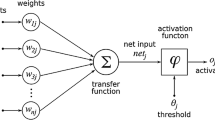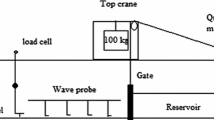Abstract
Bridges are playing a major role in the socio-economic development of any country over the world. Suspension bridges are one of the most sensitive structures to various external influences and loads. Therefore, the need for structural monitoring system, maintenance and deformation prediction for these types of structures is important and vital. Time of observations for the purpose of structural deformation can vary from a few hours, days to several months or even years. This paper investigates the performance of several soft computing techniques for point displacement modeling using GNSS technique during the process of monitoring the structural deformation of suspension highway bridge, taking into consideration the effect of wind, temperature, humidity and traffic loads during the operational and short-term measurements. Due to the availability of a large amount of positions data generated from GNSS data positions for monitoring the deformation of such structure, artificial neural networks (ANNs) and adaptive neuro-fuzzy inference system (ANFIS) should be chosen. One of the main objectives of this paper is to investigate the optimum predictive soft computing model for processing GNSS positions and points displacement prediction. Several mathematical models and two cases of data amount (66.67% and 50% of all available data) for dynamic and kinematic state are applied and compared for prediction of suspension bridge displacement with confidence interval with a probability ρ = 0.95, Δ = ± 2σ. The resulting point displacement values by applying ANNs and ANFIS, which used a confidence interval with a probability of ρ = 0.95, Δ = ± 2σ when using 66.67% of all data, are more accurate and reliable than any other applied methods, and therefore, ANNs and ANFIS can provide a significant improvement of understanding and predicting the structure deformation values where conventional mathematical modeling techniques were not as accurate or capable especially in dynamic prediction of displacements.
















Similar content being viewed by others
References
Kaloop, M.R.; Hussana, M.; Kima, D.: Time-series analysis of GPS measurements for long-span bridge movements using wavelet and model prediction techniques. Adv. Space Res. 63(11), 3505–3521 (2019). https://doi.org/10.1016/j.asr.2019.02.027
USACE: Structural Deformation Surveying (EM 1110-2-1009). US Army Corps of Engineers, Washington, DC (2002)
Beshr, A.A.A.: Monitoring the Structural Deformation of Tanks, 284 p. LAP LAMBERT Academic publishing, Germany. ISBN: 978-3-659-29943-8 (2012)
Vanatwerp, R.L.: Engineering and design: deformation monitoring and control surveying. In: Engineer Manual. U.S Army Corps of engineering, 141 p. EM 1110-1-1004. Washington, U.S. (1994)
Kaloop, M.R.; Li, H.: Monitoring of bridges deformation using GPS technique. KSCE J. Civil. Eng. (KSCE) 13, 423–431 (2009). https://doi.org/10.1007/s12205-009-0423-y
Zarzoura, F.; Mazurov, B.; Ahmed, C.: Geodetic monitoring cable-stayed bridges using GNSS. In: FIG Working Week 2015, From the Wisdom of the Ages to the Challenges of the Modern World, 10 p. Sofia, Bulgaria, 17–21 May 2015, ID No 7717 (2015)
Ince, C.D.; Sahin, M.: Real-time deformation monitoring with GPS and kalman filter. Earth Planets Space 52(10), 837–840 (2000). https://doi.org/10.1186/BF03352291
Keshavarz, Z.: Application of ANN and ANFIS models in determining compressive strength of concrete. J. Soft Comput. Civ. Eng. 2(1), 62–70 (2018). https://doi.org/10.22115/SCCE.2018.51114
Krishna, M.S.V.; Begum, K.M.S.; Anantharaman, N.: Hydrodynamic studies in fluidized bed with internals and modeling using ANN and ANFIS. Powder Technol. 307, 37–45 (2017). https://doi.org/10.1016/j.powtec.2016.11.012
Azar, R.S.; Shafri, H.Z.: Mass structure deformation monitoring using low cost differential global positioning system device. J. Appl. Sci. ASCE 6(1), 152–156 (2009). https://doi.org/10.3844/ajas.2009.152.156
Haykin, S.: Kalman Filtering and Neural Networks. Communication Research Laboratory McMaster University, Hamilton (2001) https://doi.org/10.1002/0471221546
Mellit, A.; Saglam, S.; Kalogirou, S.A.: Artificial neural network based model for estimating the produced power of a photovoltaic module. Renew. Energy 60, 71–78 (2013). https://doi.org/10.1016/j.renene.2013.04.011
Wieland, D.; Wotawa, F.; Wotawa, G.: From neural networks to qualitative models in environmental engineering. Comput. Aided Civ. Infrast. Eng. 17, 104–118 (2002). https://doi.org/10.1016/j.asr.2019.02.027
Jang, J.R.: ANFIS—adaptive-network-based fuzzy inference system. IEEE Trans. Syst. Man Cybern. 23(3), 665–685 (1993). https://doi.org/10.1109/21.256541
Acknowledgements
The authors want to thank Dr. Mosbeh Rashed Mosbeh, Public Works Engineering Department, Faculty of Engineering, Mansoura University for providing the data (observations) of the studied suspension bridge.
Author information
Authors and Affiliations
Corresponding author
Rights and permissions
About this article
Cite this article
Beshr, A.A.A., Zarzoura, F.H. An Investigation on the Performance of Soft Computing Techniques for Point Displacement Modeling for Suspension Bridge Using GNSS Technique. Arab J Sci Eng 46, 10541–10555 (2021). https://doi.org/10.1007/s13369-021-05453-6
Received:
Accepted:
Published:
Issue Date:
DOI: https://doi.org/10.1007/s13369-021-05453-6




